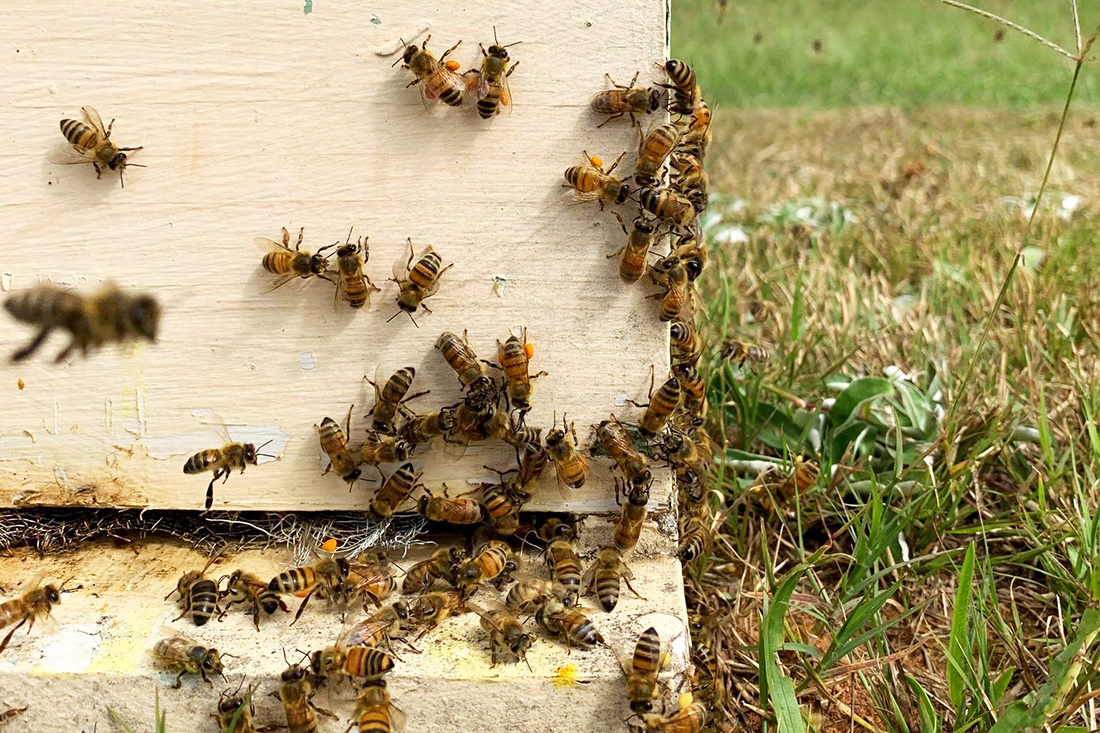Fire ants don't just cause pain to humans. They cause damage to public and personal property and to Georgia crops.
"Fire ants appear to be attracted to electricity," said Beverly Sparks, an Extension Service entomologist with the University of Georgia College of Agricultural and Environmental Sciences. "They can enter electrical boxes and cause damage to traffic lights, air-conditioning units and electrical conduits."
Sparks' research focuses on fighting the fire ant battle in Georgia. She and UGA research coordinator Stan Diffie have the envious job of killing fire ants for a living.
"Stan has killed more fire ants than anyone else in
Georgia,"
Sparks said.
Besides the damage fire ants cause inside electrical boxes, their mounds damage landscape and farming equipment.
"Fire ant mounds sit out in the open and dry to the consistency of concrete," Sparks said. "When lawn mowers and hay balers hit these mounds, they can cause significant damage to the equipment."
Fire ants were once a problem only for people in central and southern Georgia. "Now we've found fire ants in every county," she said, "even in mountainous areas we first thought were too cold in the winter for them to survive."
Spreading Across the U.S.
Until recently, fire ants in the United States were a southern problem. But they're spreading out. Fire ants are now reported in southern states as far west as Texas and in five California counties.
In Texas, fire ants damage pecans, Sparks said, by entering cracks in the soft-shelled nuts and eating the nutmeats.
"They can damage agricultural crops and harm wildlife, including birds, deer and cattle," she said.
If you're battling a few fire ant mounds yourself, Sparks recommends not disturbing the mounds.
What You Can Do
"If you can tolerate a few mounds, it's better to leave them alone," she said. "This keeps new mounds from popping up.
The fire ant mounds you see are actually only one-third of the entire mound. To kill the ants, you have to reach the whole thing.
"With fire ant baits, you can enlist the assistance of the ants to help you deliver the insecticide to every member of the colony," Sparks said. "The secret is to get the worker ants to carry your pesticide into the mounds and share it with others, especially the queen."
Broadcast a bait first, she said. Then come back two to three days later and treat any large mounds. "It's important to do this twice a year, in the spring and fall," she said.
Having tested most of the baits on the market, Sparks says those containing hydramethylnon, sold under the trade names of Amdro and Siege, work the fastest.
"All the baits basically look the same. They're made of corncob grit and soybean oil, which attracts the ants," she said. "It's the toxicants inside that are different."
Looking For New Controls
Sparks and other UGA entomologists are studying new and
unconventional
ways to fight fire ants. One new technique is to introduce one
of the ant's natural enemies, the Brazilian phorid fly.
The tiny fly lays its egg inside a fire ant's body. The egg hatches into a larva, which moves into the ant's head and causes it to fall off. The fly completes its development inside the fallen head.
"Phorid flies and other biological controls will stress colonies," Sparks said. "They'll suppress them. But they won't totally get rid of them."
Another promising biological control agent is a microsporidium called thelohania solenopsae.
"This seems to have a lot of promise," Sparks said. "It gives the colony a disease which weakens it." On the down side, the microsporidium is hard to apply.
Since fire ants arrived in the 1950s, Georgians have learned how to coexist with them.
"I worry more about visitors," Sparks said. "Visitors come to Georgia, stay in our hotels and play on our golf courses. If they don't know what fire ants are, they're in for a big surprise."






